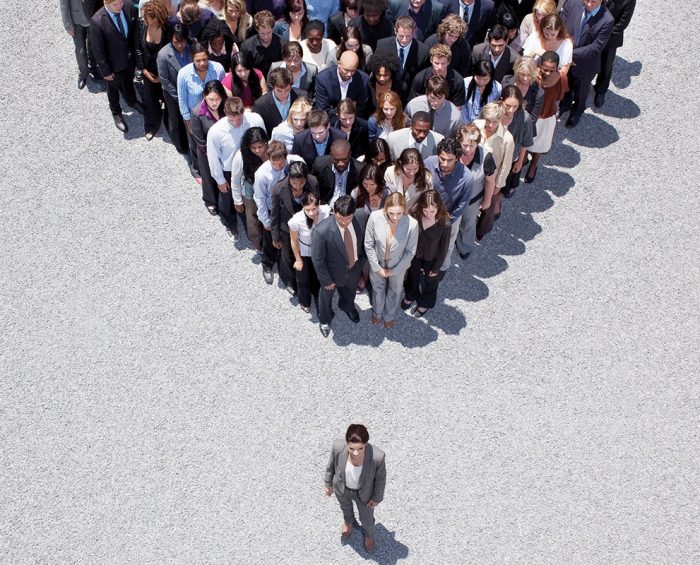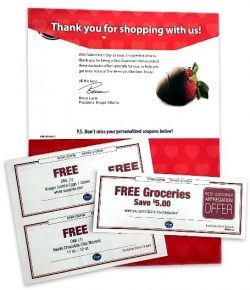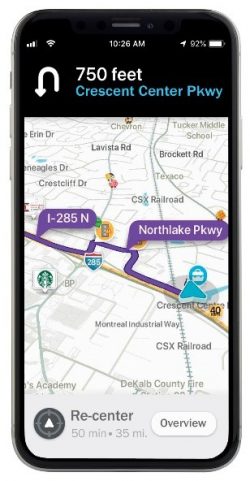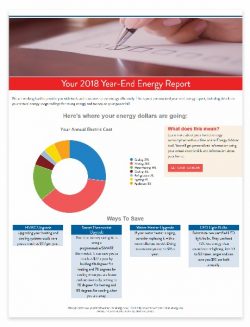September 4, 2019 | Customer Engagement
 If you want to learn how to do something well, study those who are most successful at it. Whether it is skiing or running a company, success often comes from applying the techniques of others who have proven and perfected techniques that work. If you’re in the regulated utility business, it’s tempting to just compare yourself to other utilities that are “in the top quartile.” But the regulated utility business is not necessarily known for being first at inventing new solutions. Learning from the leaders can mean studying industries outside of your own to bring fresh perspectives and break-through practices.
If you want to learn how to do something well, study those who are most successful at it. Whether it is skiing or running a company, success often comes from applying the techniques of others who have proven and perfected techniques that work. If you’re in the regulated utility business, it’s tempting to just compare yourself to other utilities that are “in the top quartile.” But the regulated utility business is not necessarily known for being first at inventing new solutions. Learning from the leaders can mean studying industries outside of your own to bring fresh perspectives and break-through practices.
Even though some utilities may readily say they are fast followers, most will admit they are intrinsically afraid of change and risk. So they shy away from thinking outside the box. And, to be fair, they can survive with that approach because they generally don’t encounter the brutal, competitive crush other free-market industries face.
Look Outside the Box
Nevertheless, it is a healthy exercise to consider what you might have to do if you faced the kind of competition other industries do. Would you survive, or possibly even thrive? Questions like this have some obvious answers, prime among them being to build strong relationships with customers — something most utilities have not had to do. The clear business advantage for utilities with engaged customers is lower operating costs (fewer calls to the call center), higher customer satisfaction and the consequential higher returns on investment – all which should satisfy the business case question.
But, the bottom-line impact of truly innovative change is often uncertain, and it is all too easy to hide behind regulatory rules and uncertainty even though most regulators are eager for utilities to try new approaches, at least on a pilot basis.
See the Customer’s Needs First
In an interview some time back, Amazon President Jeff Bezos stated that “The thing that connects everything Amazon does, and the number one conviction and principal, is Customer Obsession … always focused on the customer’s needs and working backward from the customer’s needs.” I think we can all agree that Amazon’s success is unprecedented.
For utilities, one could argue that customers are their most valuable asset. And, in this new world, growing, nurturing, and protecting those customers and relationships today and into the future could be the most important thing you do. Customers may not be able to switch to another utility, but the technology to meet their energy needs — without the utility — already exists. And that technology is becoming cheaper and more accessible every day.
What steps are you taking to protec t your customers? Are you thinking backwards from the customer’s needs? This article takes a look at some of the most effective customer engagement techniques used by top-ranked companies in other industries, how they are being applied by energy retailers today, and with what results.
t your customers? Are you thinking backwards from the customer’s needs? This article takes a look at some of the most effective customer engagement techniques used by top-ranked companies in other industries, how they are being applied by energy retailers today, and with what results.
Kroger: Personalize
Take for instance the retail grocery business, one of the most brutally competitive low-margin businesses around — typically a 1 to 3 percent profit range, depending on the items. The key to their success is volume, with lots of customers filling large carts.
To survive, grocery companies must fight to get the right customers in their doors, win their loyalty, and keep them filling their shopping carts. A competition I watch here in Atlanta is the battle between Publix and Kroger. We shop at both, but I must give credit to Kroger for their creative use of personalization. I found it kind of creepy when Kroger, many years ago, started asking for my phone number every time I shopped. In exchange, you received a nice discount on your receipt, so most people played along and provided their number. But I wondered why they wanted to keep up with me and my purchases.
One day while sorting through the mail it became clear. I usually throw away the junk mail but opened a personalized envelope from Kroger boldly exclaiming COUPONS FRESH PICKED FOR SUSAN GILBERT. I had now discovered one use they had for my information. Inside were 20 coupons for the items I purchased most weeks at the store, many of them not for a discount but marked FREE. Wow, I’m not much of coupon clipper, but picking up that week’s shopping list at no cost converted what I found to be creepy to caring.
Impressed with the creativity of the offer, I was fortunate to meet with the President of Kroger Southeast, Bruce Lucia, and asked about it. He said that knowing his customers and using personalization was critical to keeping their competitive edge. He asked what our industry does. When I told him segmentation, he said, “That’s so 90s … We wouldn’t survive with something so general, and why do that when you know something specific about each individual customer?” Good question.
AmEx: Categorize & Initialize
What other businesses have captivated attention and impressed their customers? Financial Services consistently runs at the top of the JD Power industry rankings list, and American Express often leads the category. Their number one position in 2017 marked the ninth time American Express earned the highest ranking since the study was launched in 2007. The company dominated the top spot from 2007 through 2013 and shared the highest ranking in 2014. So let’s look at what they do.
American Express proactively provides its members – not customers – an annual statement categorizing their spending for the previous year. It’s designed to help you with your taxes, but it comes unrequested in an attractive folder, which includes charts, graphs and detailed summaries of all your charges.
Three other highly effective member engagement techniques American Express uses that are initialized proactively (meaning you don’t have to request them) to arrive at the moment the message is most relevant. These are Notifications, Payment Reminders, and Payment Received, all also offering to gather your Feedback.
Finally, most of their e-mails feature a FEEDBACK button as king, “Was this helpful?” and asking you to provide your thoughts about the notice or other aspects of their service.
king, “Was this helpful?” and asking you to provide your thoughts about the notice or other aspects of their service.
Waze: Personal AND Proactive is Key
The Waze app is another innovative business model of personalized, useful, relevant messaging. It’s credited with changing traffic patterns across the country as it directs drivers down obscure, little-used roads to get around traffic back-ups. If you haven’t used it, I recommend you download that app and give it a try. I have found it changes the way I think about each trip I make. Instead of looking at a map or at your car’s GPS, you check Waze to get a recommendation for the best routes to your destination. It considers traffic jams, road construction, wrecks, and other factors that impact drive time.
Initially, I didn’t think much about the app until one day, as I prepared to head to the office, it did something unexpected: it proactively alerted me to go a different way. How did it do that? Well, it knows I leave about the same time each morning, and it knows the route I take, so it must have been aware of something along the way that was slowing traffic. That simple outbound, relevant message totally changed my relationship with the app and gave me a much greater regard for Waze.
You Have the Data
You might be thinking Kroger, American Express and Waze have a leg up on utilities because they have the data needed to produce these enlightening and useful coupons, reports, and routes. But think again.
All utilities have billing consumption data, meter-read dates, and can get weather data coincident with the meter-read dates. Many have AMI data on top of all that so real-time notifications are clearly doable. Plus, billing and/or AMI data combined with mathematical modeling can tell a great deal about the customer that can be configured into useful, relevant messages and reports. And any messaging can incorporate the Feedback concept to help keep the customer actively and happily engaged.
Monetize it!
Messages that get the best traction are ones that go one step beyond relevance and personalization and include some level of monetization. For instance, “Lowering your thermostat a few degrees would save you $25 between now and the end of the billing cycle.” Or, “Your next bill is estimated to be between $80 and $120, here are some ways to lower it.”
Revealing Results…
 There are enough utilities that have been sending personalized, relevant messages to customers long enough to give us the industry data to support its effectiveness:
There are enough utilities that have been sending personalized, relevant messages to customers long enough to give us the industry data to support its effectiveness:
An IOU in the northeast found 5 times more program participation from customers who had profiled their home with one of their online applications and were then offered programs appropriate to their home.
At Apogee, we have been messaging customers for dozens of utilities for over 5 years. We regularly see enormous spikes in online activity when customers are sent proactive messaging. The open rates tend to increase with each subsequent distribution, which we attribute to customers becoming increasingly aware that these truly are personalized, not generic.
When we started, we feared what we referred to as “carpel tunnel opt-out syndrome.” It has surprised us that in the millions of messages we send on behalf of the utility, or that the utility sends directly, opt-outs are almost nonexistent. As we pondered why, we have concluded the reason is the messaging is not regular or routine on a certain day or time. It’s only sent when something has happened to trigger the message, making it relevant. For instance, when your bill has increased by more than $50, you receive a message explaining why. Or when a critical peak market condition is anticipated, a message is sent requesting customers to conserve.
So, What Should a Utility Do?
There are a few things that are foundational and far from optional. The successful utility of the future will have engaged customers who think of contacting their energy provider first when questions about energy use in their lives comes up. Since customers rely on “voice assistants” so much today and on Google for searching, check out what Siri, Cortana and Google would recommend when you ask questions the way your customers would ask them when they’re looking for assistance.
And in the race to build those relationships, no magic wand is required. There are plenty of proven methods a utility can replicate establishing a valuable, repeating cycle of involvement.
We believe the acronym POP summarizes the formula: Personalized Outbound, Proactive communications are the key. Fortunately, examples of what you can offer in information content are easily observable and obtainable. Most utilities today have the foundational pieces of the engagement puzzle in place. So, start there, but you will probably have to admit that there is a lot more you can be doing to Personalize, Initialize, and Monetize that information. Just learn from the leaders.
APOGEE INTERACTIVE, INC. © 2023. ALL RIGHTS RESERVED